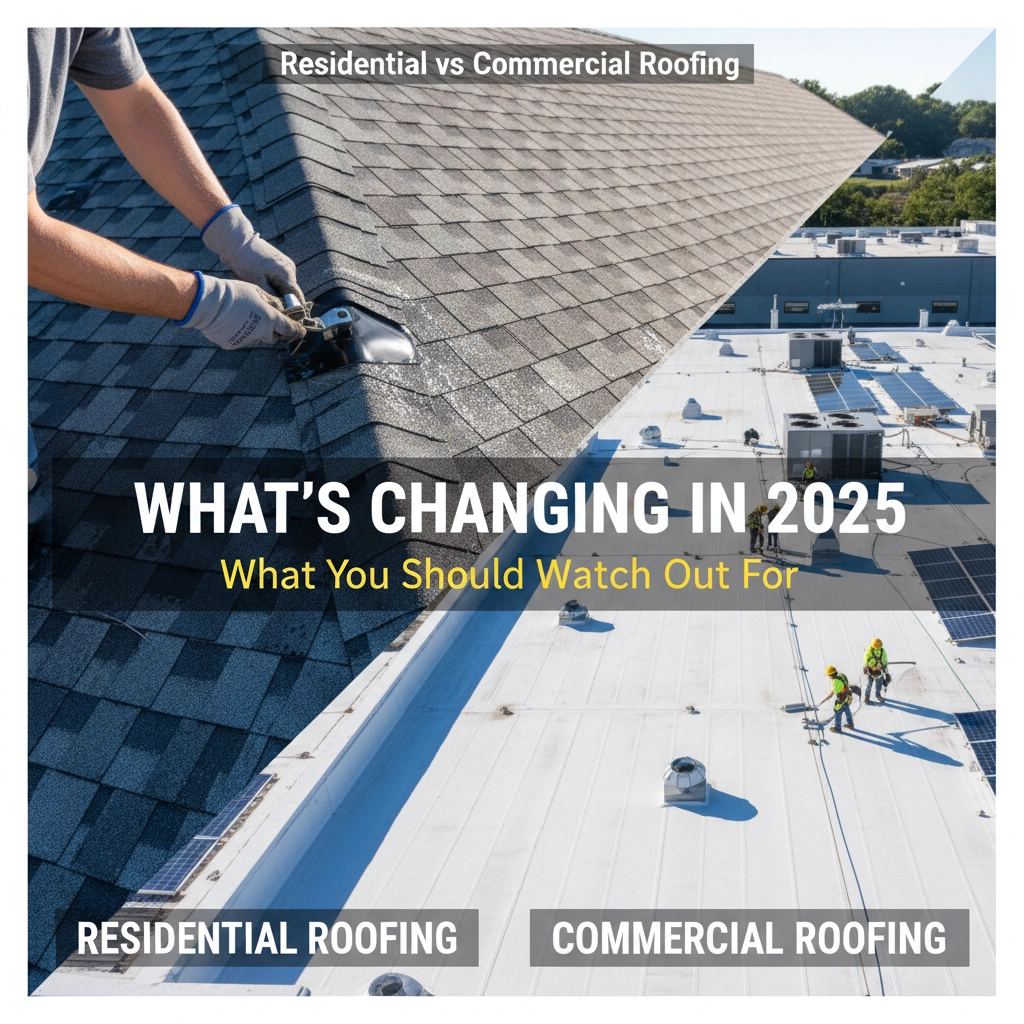
The roofing industry is experiencing a seismic shift in 2025, and both residential and commercial property owners need to pay attention. From new regulations questioning traditional materials to breakthrough technologies that can predict leaks before they happen, this year is reshaping how we think about protecting our buildings.
Whether you're a homeowner planning a roof replacement or a property manager overseeing commercial buildings, understanding these changes isn't just helpful: it's essential for making smart decisions that'll save you money and headaches down the road.
The Fundamental Differences That Matter More Than Ever
Before diving into what's new, let's get clear on why residential and commercial roofing have always been different beasts. These differences are becoming more pronounced in 2025 as each sector faces unique challenges.
Residential roofing typically deals with steep slopes, smaller surface areas, and aesthetic concerns that affect property values. Homeowners want their roofs to look great from the street while protecting their families and belongings.
Commercial roofing focuses on large, often flat surfaces where function trumps form. The priority is protecting business operations, inventory, and equipment while minimizing maintenance disruptions and long-term costs.
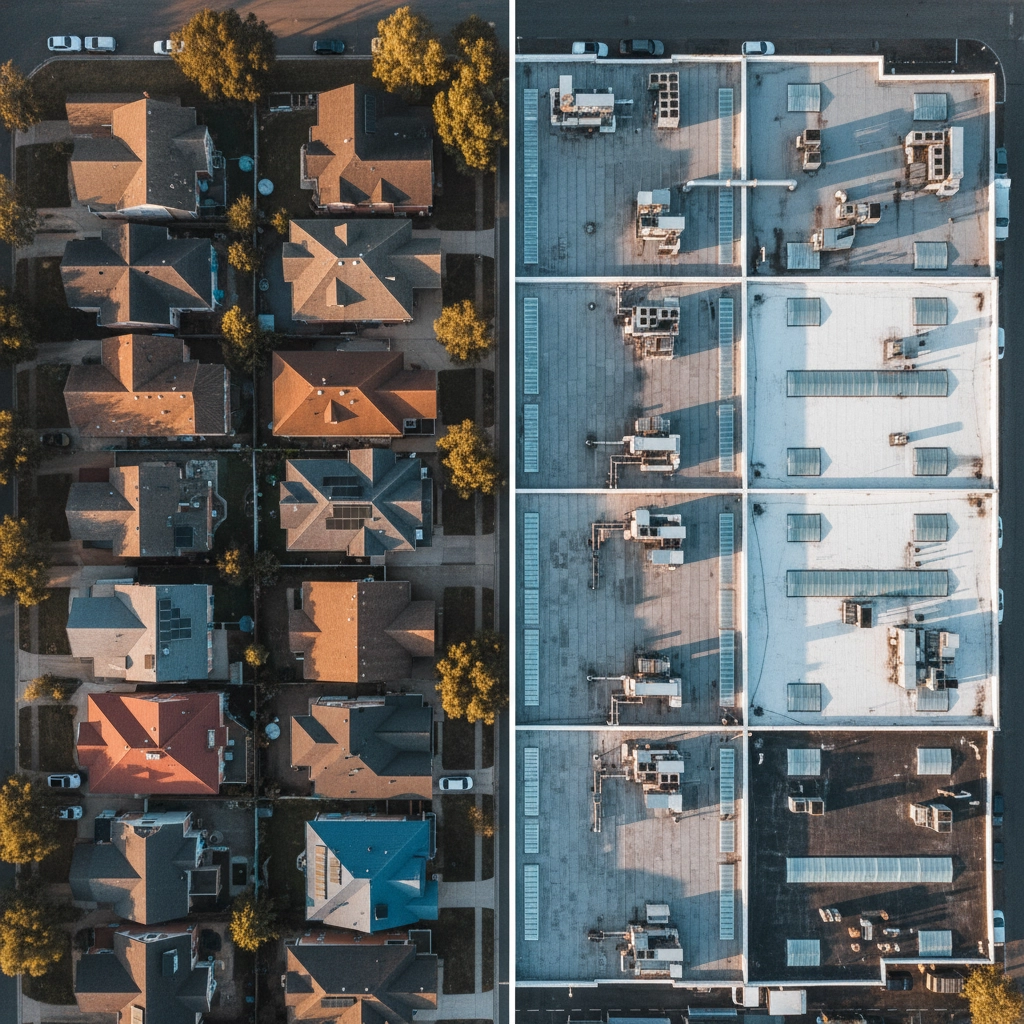
These basic differences mean that trends affecting one sector don't always translate to the other. What works for a suburban home might be completely impractical for a warehouse, and vice versa.
What's Shaking Up Residential Roofing in 2025
The Asphalt Shingle Reckoning
Here's something that might surprise you: asphalt shingles, the go-to choice for decades, are under serious fire. Florida's Office of Insurance Regulation has publicly stated that asphalt shingles "often do not last as long as manufacturers claim." The Insurance Institute for Business and Safety went even further, arguing that shingle durability hasn't improved much over the years despite marketing claims.
This regulatory scrutiny is spreading beyond Florida to wildfire-prone areas like California, where homeowners are demanding materials with Class 4 wildfire ratings. If you're planning a residential roof project, expect to hear more about alternative materials like metal roofing, which is gaining serious traction.
Smart Home Integration
Residential roofing is getting seriously smart. We're talking IoT sensors that monitor moisture levels, thermal imaging that spots problems before they become disasters, and systems that integrate with your home's overall smart ecosystem. These technologies are moving from "nice to have" to "standard expectation" faster than most people realize.
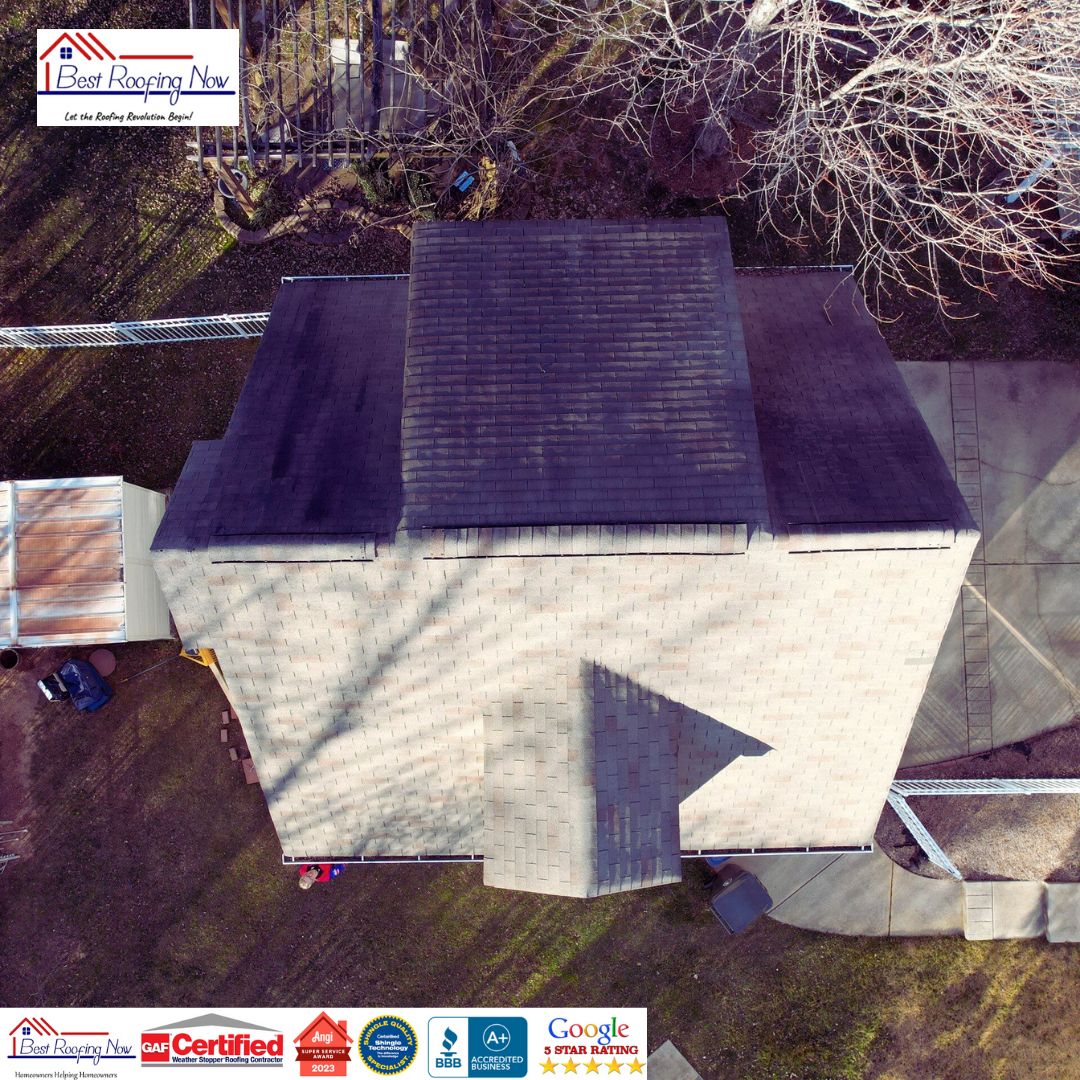
Solar Integration Revolution
The numbers don't lie: 292 GW of solar capacity was added before July 2024 alone. But it's not just about adding panels anymore. We're seeing solar shingles that blend seamlessly with traditional roofing materials and integrated systems designed from the ground up. For homeowners, this means thinking about energy generation as part of the roofing decision, not an afterthought.
Commercial Roofing's 2025 Evolution
Sustainability at Scale
Commercial properties are leading the charge on green roofing solutions, and it makes sense: they have the space and budget to make these technologies viable. Cool roofs with reflective coatings are becoming standard in many areas, not just because they're environmentally friendly, but because they deliver real cost savings on energy bills.
Predictive Maintenance Technology
Commercial roofing is embracing automation and AI-driven maintenance planning. Instead of waiting for problems to appear, smart sensors can predict when specific areas of a roof need attention. For property managers juggling multiple buildings, this technology is a game-changer.
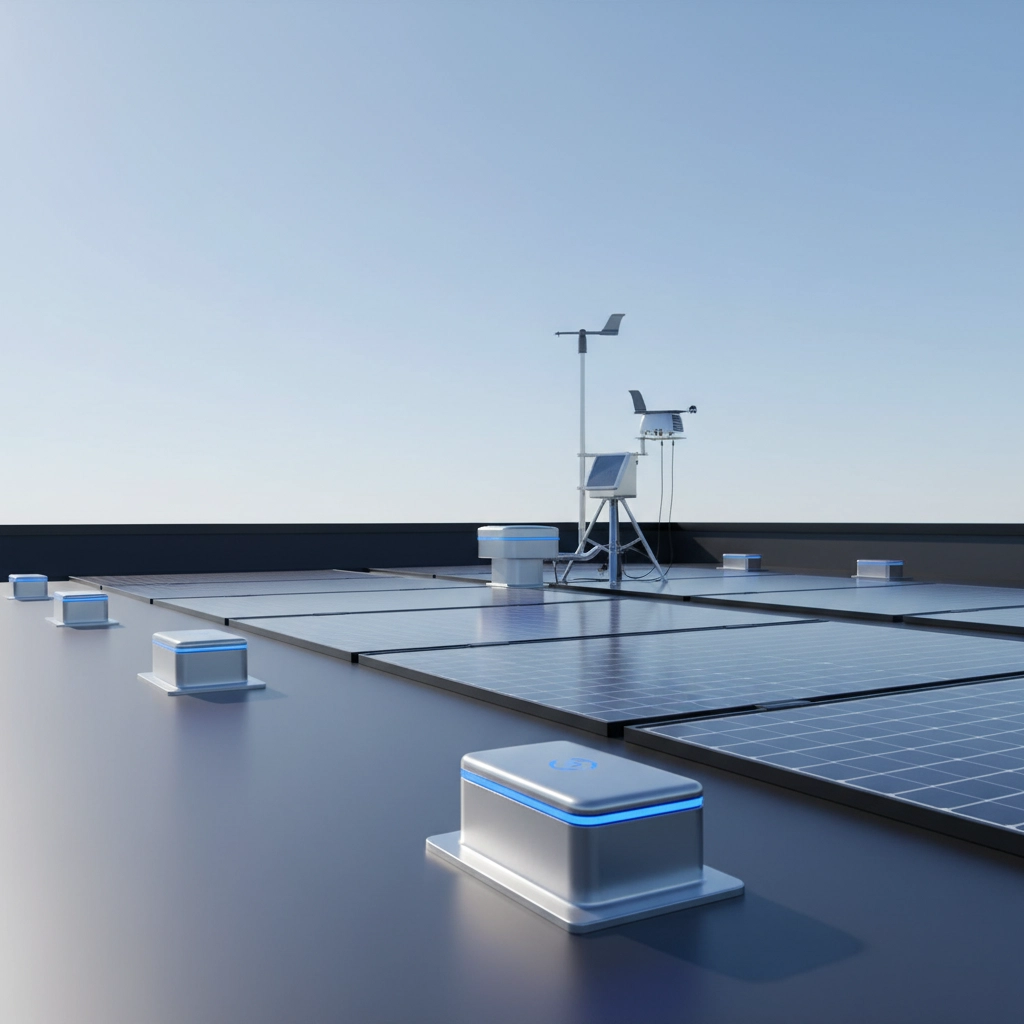
Regulatory Compliance Focus
Commercial buildings face stricter energy codes and sustainability requirements. The shift toward compliance-focused roofing solutions means materials and installation methods are being chosen based on meeting or exceeding regulatory standards, not just initial cost considerations.
Innovations Changing Both Sectors
Advanced Materials Science
Both residential and commercial roofing are benefiting from materials that can withstand extreme weather better than ever before. Impact-resistant options aren't just for hurricane zones anymore: they're becoming standard in areas prone to hail, high winds, and temperature extremes.
Data-Driven Decision Making
Whether it's a homeowner tracking their roof's performance through an app or a facility manager analyzing data from dozens of commercial properties, 2025 is the year roofing decisions are backed by real data rather than guesswork.
The Cost Reality Check
Let's talk numbers because they matter. The median annual wage for roofers hit $50,030 in May 2023, and it's climbing. This isn't just inflation: it reflects the increasingly skilled nature of the work and the investment in safety equipment and training.
For residential projects, this means budget more for quality installation. For commercial properties, it translates to viewing roofing as a long-term investment where upfront costs are offset by reduced maintenance and energy savings.
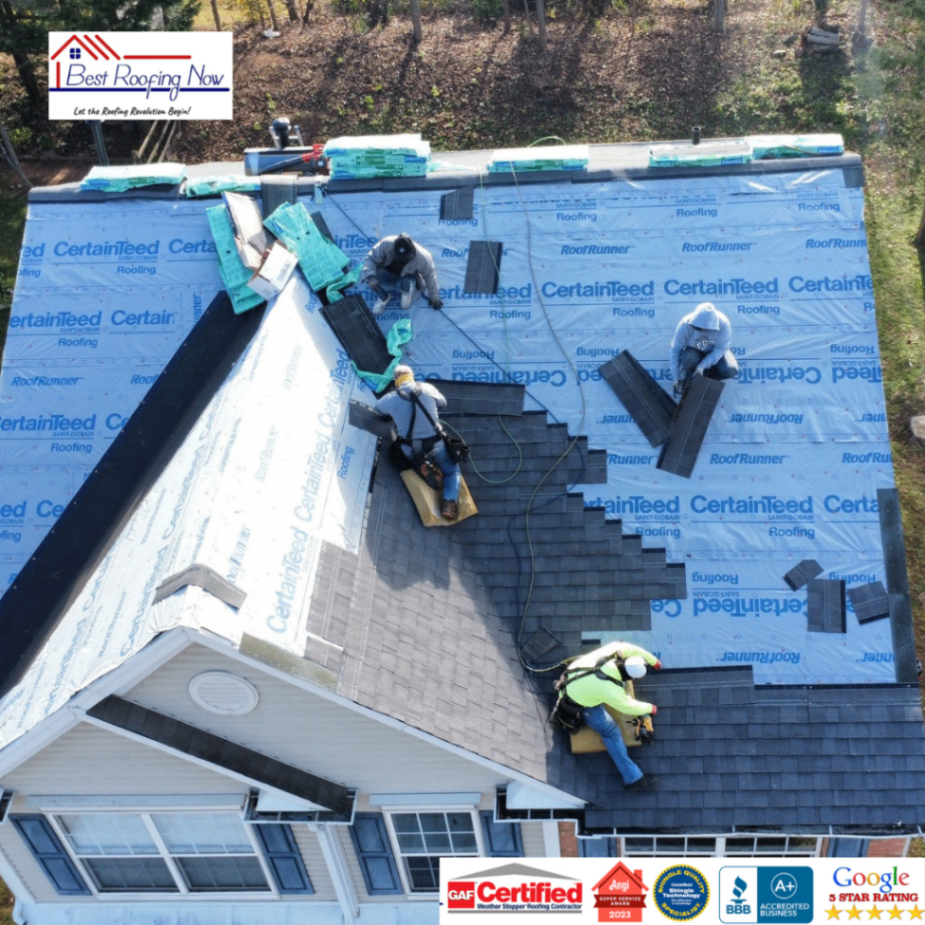
ROI Considerations
Residential ROI focuses on energy savings, property value increases, and reduced insurance premiums. Smart roofing technologies and high-performance materials often pay for themselves within 5-10 years through lower utility bills and fewer repair needs.
Commercial ROI calculations include operational continuity, energy efficiency, and compliance benefits. A commercial roof that prevents business interruptions and meets energy codes can deliver ROI in ways that don't show up immediately in the budget.
Red Flags to Watch Out For
Material Transition Challenges
As the industry moves away from traditional asphalt shingles, be wary of contractors who haven't expanded their expertise. The best contractors in 2025 are those who've invested in training for alternative materials and new technologies.
Technology Implementation Issues
Smart roofing sounds great until the sensors fail or the monitoring system crashes. Choose contractors who partner with established technology providers and have experience with system integration, not just installation.
Regulatory Changes
Building codes are evolving rapidly, especially in climate-sensitive regions. What's compliant today might not be next year. Stay informed about local regulations and work with contractors who track these changes.
Your Decision Framework
For Residential Properties
Start with your local climate challenges and regulations. If you're in a wildfire zone, prioritize fire-resistant materials. In hurricane areas, focus on impact resistance and wind ratings. Factor in long-term energy costs and potential insurance savings when comparing options.
Consider your home's smart technology ecosystem. If you're already invested in home automation, choose roofing solutions that integrate well with your existing setup.
For Commercial Properties
Begin with a comprehensive assessment of your building's specific needs, including energy codes, operational requirements, and maintenance capabilities. Consider the total cost of ownership over the roof's entire lifecycle, not just installation costs.
Evaluate your capacity for maintaining advanced systems. Smart roofing technologies deliver great benefits, but only if your team can properly monitor and maintain them.
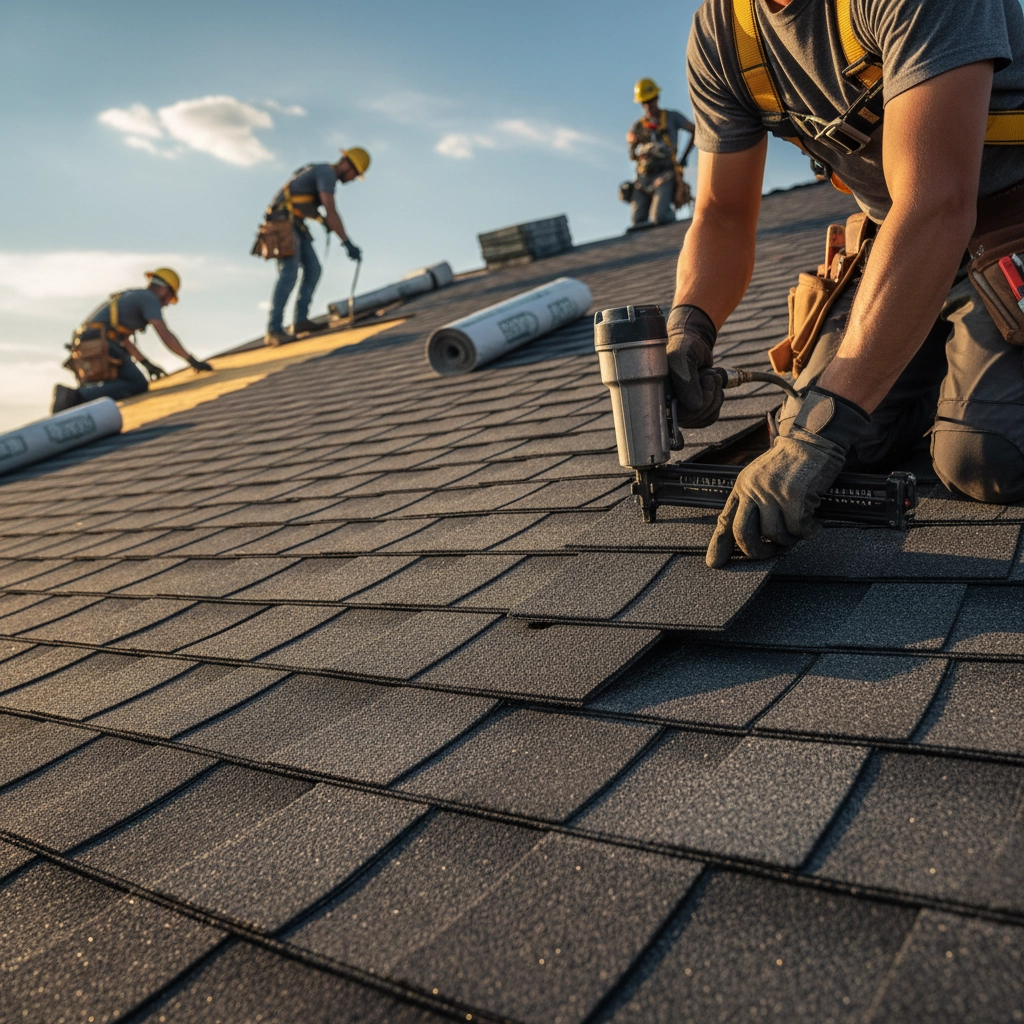
Making the Right Choice
The roofing industry's transformation in 2025 offers more options than ever, but also more complexity. Whether you're dealing with residential or commercial property, success comes down to working with contractors who understand both traditional roofing fundamentals and emerging technologies.
Don't rush into decisions based on the latest trends alone. The best roofing choice combines proven reliability with innovations that make sense for your specific situation. Take time to understand your local regulations, climate challenges, and long-term goals.
The roofing industry is experiencing faster-than-average growth, with approximately 13,600 annual openings expected over the next decade. This growth brings both opportunities and challenges: more options but also more contractors with varying levels of expertise in new technologies and materials.
Ready to navigate these changes for your property? Our team at Best Roofing Now stays current with industry developments and can help you understand which 2025 innovations make sense for your specific needs. Contact us for a consultation that considers both current best practices and emerging trends that could benefit your residential or commercial property.
The future of roofing is here, and it's more exciting than ever. But success still comes down to the basics: quality materials, expert installation, and choosing partners who understand your unique needs.
